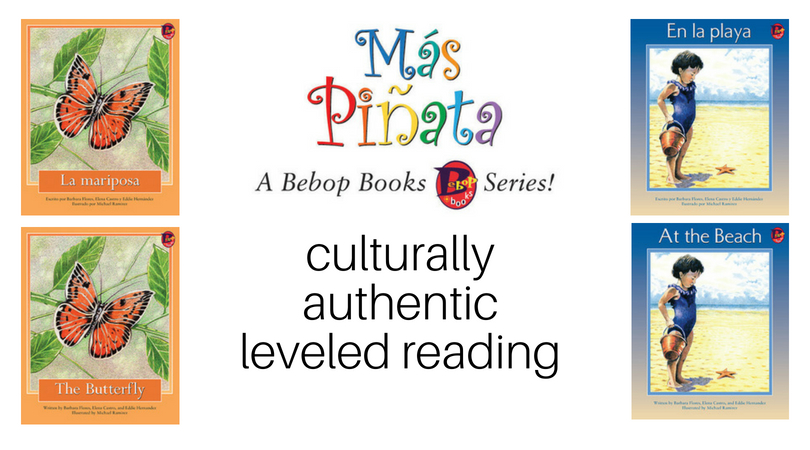 In the first post of our new blog series, Dr. Barbara Flores shares the history and philosophy behind the beloved dual language leveled reading series, Más Piñata.
In the first post of our new blog series, Dr. Barbara Flores shares the history and philosophy behind the beloved dual language leveled reading series, Más Piñata.
Historical Background
During the decades of the 1980s and 1990s, literacy researchers made tremendous progress in reading development. Predictable books with varying text features became plentiful, widely used, and highly successful. These books evolved into leveled books that were used in Guided Reading.
Bilingual Education was also gaining stature. However, there were no books in Spanish, and the ones that were available presented stereotypes and inaccurate translations. The dearth of culturally relevant and natural Spanish language was the status quo. Faced with this void, we, Grupo Educaturas, embarked on a shared dream at the beginning of the 1990s—creating authentic, culturally relevant and predictable books that used representative illustrations and photos of Latino culture, families, and children.
Rationale and Philosophy
The philosophy underpinning Más Piñata collection includes:
- Creating culturally relevant books that depict everyday culture
- Depicting our children’s images that are both authentic and realistic in the illustrations and photos and using authentic, natural Spanish and English
- Including traditional Spanish children’s songs, rhymes, and poems
- Choosing interesting nonfiction topics
- Adapting traditional tales that include a dicho (wise saying and lesson) at the end.
Likewise, Spanish speaking children learning English literacy need to learn through their own cultural eyes. As English Language Learners, they also need to see themselves and their families in everyday cultural contexts that authentically reflect their lives and everyday reality. Más Piñata incorporates and captures all of these cultural, linguistic, and social aspects of everyday life.
For example, everyday cultural experiences are found in the following titles– En la playa, La charreada, Mi cumpleaños, Mi escuela, Conoce a mi familia, Mi cuerpo, No les tengo miedo, and Los monstruos. The children can relate and see themselves in the stories and the illustrations/photos match the text.
Sara Sarita, Brilla, brilla estrellita, and Mi mami are rhythmic and playful so the children engage with song and poetry.
La mariposa, La flor, Las figuras, and Mis cinco sentidos represent some of the nonfiction titles. We included nonfiction because children are naturally curious about insects, shapes, math and science in particular.
The last category included adapting Traditional Tales and including a dicho/saying (life lesson). We adapted the Three Little Bears to El niño travieso y los tres osos and the Three Little Pigs to Los tres cerditos. The sayings at the end are lessons learned.
In the next blog post, I will expand on Mini Shared Reading as a bridge to Proficient Reading and Family Literacy and Biliteracy.
Browse our Más Piñata collections online:
Want help creating a custom order? Fill out our form, or contact our Educational Sales Assistant, Verónica Labarca, for leveling and ordering information: vlabarca [at] leeandlow [dot] com or call toll-free: 1-888-320-3190 x. 22.

Dr. Barbara Flores is a pioneer Latina scholar, activist, and author of the groundbreaking Más Piñata leveled reading series. She is an expert in the areas of biliteracy development, bilingual education, and critical pedagogy. Dr. Flores currently serves as President of the California Latino School Boards Association and teaches at California State University, San Bernardino.









